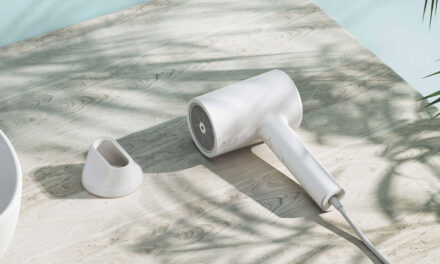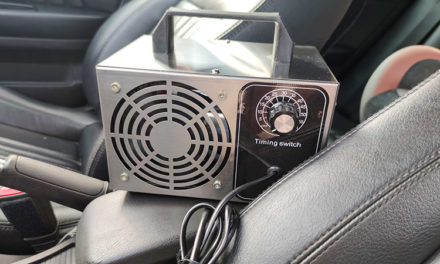
Fractal Design Define R4 - Less Is Still More!
Let's start with the dimensions! The Define R4 measures 464 × 523 × 232 millimeters. This is pretty much the size of a standard midi tower, but somehow it still looks more, bigger because of the completely square lines and edges. This can also be explained by the fact that it weighs more than 12 kilograms, so it is not particularly light, in fact!
As you can read on the previous page, the point is to use simple and practical solutions, and the Define R4 certainly shows many good examples of this!
Here, for example, is the front panel right away. In addition to being a house with a simple but flashy door, behind the door we find a wealth of fine solutions. Here’s a simple yet extremely useful switch right now that we can use to control the voltage across the fans, rewarding them with 5, 7 or 12 volts. But that's not the most imaginative part.
The front panel can be snapped off completely. But, and here’s the good thing, we don’t have to take off the front panel to access the fans and dust filters underneath. All you have to do is open the door and open the dust filter cover after opening the door, and then you can fold down the frame containing the fans on a subsequent level. That's what it's said to be a star five!
Staying on the front panel, we still have to look at the controls. Compared to the Define R3 introduced last year, we are experiencing two small changes. The first is that we got a reset button, the second is that the number of USB connectors has increased from three to four, instead of one we find two USB 3.0 channels. In addition, the microphone input and the audio output are still there.
There has been no change from the outside of the sides of the house compared to the R3, so let’s look more at the butt of the house! There must have been changes here. Here a little more, there a little less, as if they were striving for balance according to the Jin and Jang principle. More came from air cooling, as there are 12 inches in the house instead of 14 inches. On the other hand, perhaps due to the decline in the popularity of liquid chillers, we do not find any trace of rubberized holes in the water pipes.
Fortunately, the bottom plate has also changed. Here we already found dust filtration at last year's house, but we turned our faces blushing due to its lame formation. This paralysis seems to have appeared to others as well, because it’s not enough to get two fan seats now (well, one is the venti in the power supply), but the frame of the dust filter has also gotten stronger so you don’t want to fall out. I like it too!
We didn’t talk about one thing about the exterior, and that is the colors. The Define R4 is available in three color variants, with window or full side panels, for a total of six variants. Luckily, we were able to see all three and even take photos.
The three colors are Arctic White, Black Pearl and Titanium Gray. The lighting conditions may be bad for us, but in the latter two versions only the color of the door seems to be different, although in fact, this is what we see most of the time. We liked the white version the best anyway. Not only because the gleaming white door and all-white paintwork are special, but also because the fingerprints are much less visible on the glossy surface. If we were sure to break our heads when buying Define R4, then Arctic White would be the winner.
In the case of the Black Pearl - Jack Sparrow is about to knock - and the Titanium Gray, the interior is interesting, because, as with the Define R3 we had annually, the hard drive trays are white and the Arctic White has black ones. It looks good, well, but since we only discuss the interior on the next page, you have to turn to the pictures!
Well, so, the Define R4 so far seems to have brought some improvement over its predecessor, which wasn’t bad anyway. Let's see inside what the engineers have developed!






















